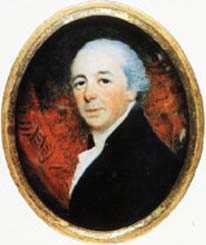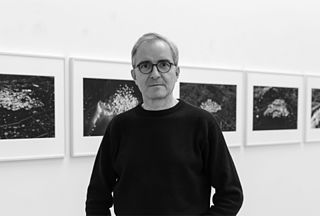
John Nash was one of the foremost British architects of the Regency and Georgian eras, during which he was responsible for the design, in the neoclassical and picturesque styles, of many important areas of London. His designs were financed by the Prince Regent, and by the era's most successful property developer, James Burton, with whose son Decimus Burton he collaborated extensively. Nash's best-known solo designs are the Royal Pavilion, Brighton, Marble Arch, and Buckingham Palace; his best known collaboration with James Burton is Regent Street; and his best-known collaborations with Decimus Burton are Regent's Park and its terraces and Carlton House Terrace. The majority of his buildings, including those to the design of which the Burtons did not contribute, were built by the company of James Burton.

Augustus Welby Northmore Pugin was an English architect, designer, artist, and critic who is principally remembered for his pioneering role in the Gothic Revival style of architecture. His work culminated in designing the interior of the Palace of Westminster in Westminster, London, England and its iconic clock tower, later renamed the Elizabeth Tower, which houses the bell known as Big Ben. Pugin designed many churches in England and some in Ireland and Australia. He was the son of Auguste Pugin, and the father of Edward Welby and Peter Paul Pugin, who continued his architectural firm as Pugin & Pugin. He also created Alton Castle in Alton, Staffordshire.

Decimus Burton one of the foremost English architects and urban designers of the 19th century. He was the foremost Victorian architect in the Roman revival, Greek revival, Georgian and Regency styles. He was a founding Fellow and, later, Vice-President, of the Royal Institute of British Architects, and architect to the Royal Botanic Society from 1840 and an early member of the Athenaeum Club, London, whose club premises he designed and the company of father, James Burton, the pre-eminent property developer of Georgian London, built. Modern architectural historians, such as Guy Williams (1990) and Dana Arnold (2004), contend that Decimus Burton's contribution to architecture has been grossly underestimated by previous architectural historians: as a consequence of the misattribution to Nash of many of his works; of his undeserved vituperation by his neo-gothic nemesis, Augustus Pugin; and of the consequent retention of his archives by his family.
The year 1834 in architecture involved some significant architectural events and new buildings.
The year 1859 in architecture involved some significant architectural events and new buildings.
The year 1844 in architecture involved some significant architectural events and new buildings.
The year 1851 in architecture involved some significant architectural events and new buildings.
The year 1835 in architecture involved some significant architectural events and new buildings.
The year 1852 in architecture involved some significant architectural events and new buildings.
The year 1845 in architecture involved some significant architectural events and new buildings.

Wellington Arch, also known as Constitution Arch or (originally) as the Green Park Arch, is a Grade I-listed triumphal arch by Decimus Burton that forms a centrepiece of Hyde Park Corner in central London, between corners of Hyde Park and Green Park; it stands on a large traffic island with crossings for pedestrian access. From its construction in 1826 until 1830 the arch stood in a different location nearby; it was moved to its current site in 1882–1883. It originally supported a colossal equestrian statue of the 1st Duke of Wellington by the sculptor Matthew Cotes Wyatt, as a result of which it has acquired the name "the Wellington Arch" in the vernacular. A bronze quadriga by Adrian Jones has surmounted it since 1912.

Jean-Baptiste Bethune was a Belgian architect, artisan and designer who played a pivotal role in the Belgian and Catholic Gothic Revival movement. He was called by some the "Pugin of Belgium", with reference to influence on Bethune of the English Gothic Revival architect and designer, Augustus Pugin.

George Myers (1803–1875) was an English builder, best known for his work with the architect and designer Augustus Pugin.

Lieutenant-Colonel James Burton was the most successful and imperative property developer of Regency and Georgian London. By the time of his death in 1837, Burton had built over 3000 properties, and his buildings covered over 250 acres of central London. His imperative contribution to the development of the West End has been acknowledged by James Manwaring Baines, John Summerson, and Dana Arnold. Steen Eiler Rasmussen, in London: The Unique City, commended Burton's buildings, but did not identify their architect. The 21st century Oxford Dictionary of National Biography contends that Burton were 'the most successful developer in late Georgian London, responsible for some of its most characteristic architecture'.

The Grange in Ramsgate, Kent, on the coast in southern England was the home of the Victorian architect and designer Augustus Pugin. He designed it in the Victorian Gothic style; it is a Grade I listed building.
Thomas Larkins Walker (c.1811–1860) was a Scottish architect.

St Peter's Church is a Roman Catholic church in Woolwich, South East London. It is situated between Woolwich New Road and Brookhill Road, the main entrance being on Woolwich New Road. The church was designed by Augustus Pugin in 1841-42 in the style of the Gothic Revival and is one of only three Pugin churches in London. Pugin's design remained unfinished as the projected tower and spire were never built. The parish of St Peter the Apostle serves the Catholic community of central Woolwich and surrounding areas, and is part of the Archdiocese of Southwark which is in the Province of Southwark.
Lady Alexandra Mary Wedgwood FSA is an English architectural historian and expert on the work of Augustus Pugin. She is the patron of the Pugin Society and the former architectural archivist of the House of Lords.













